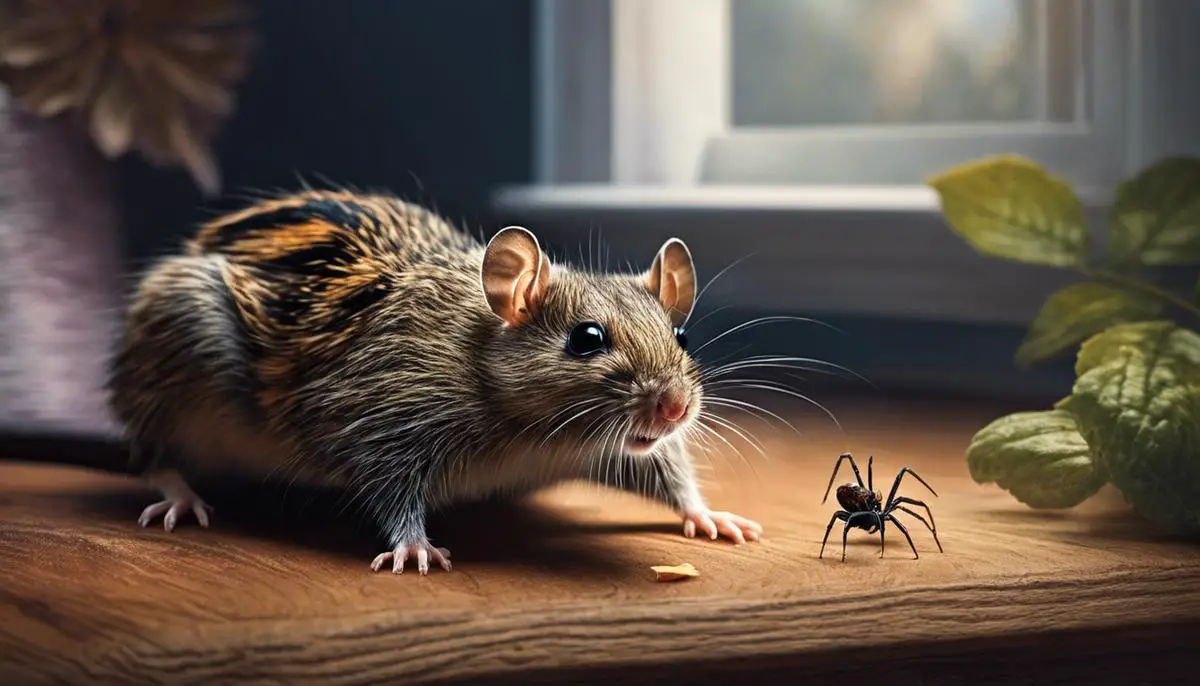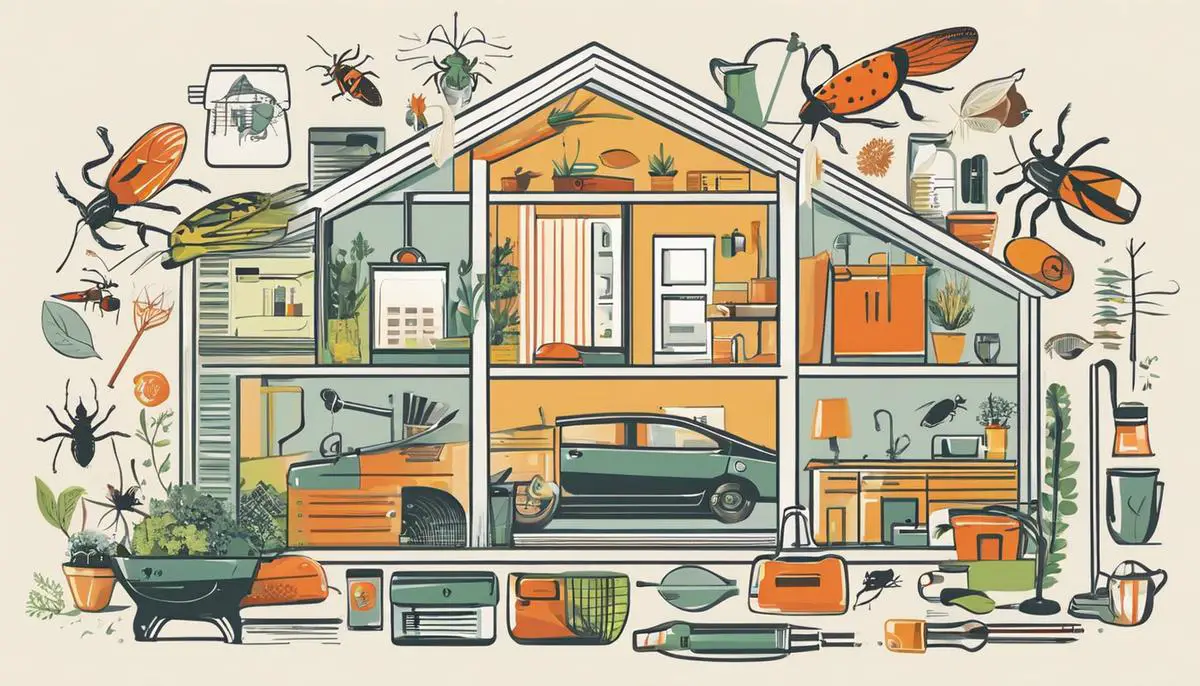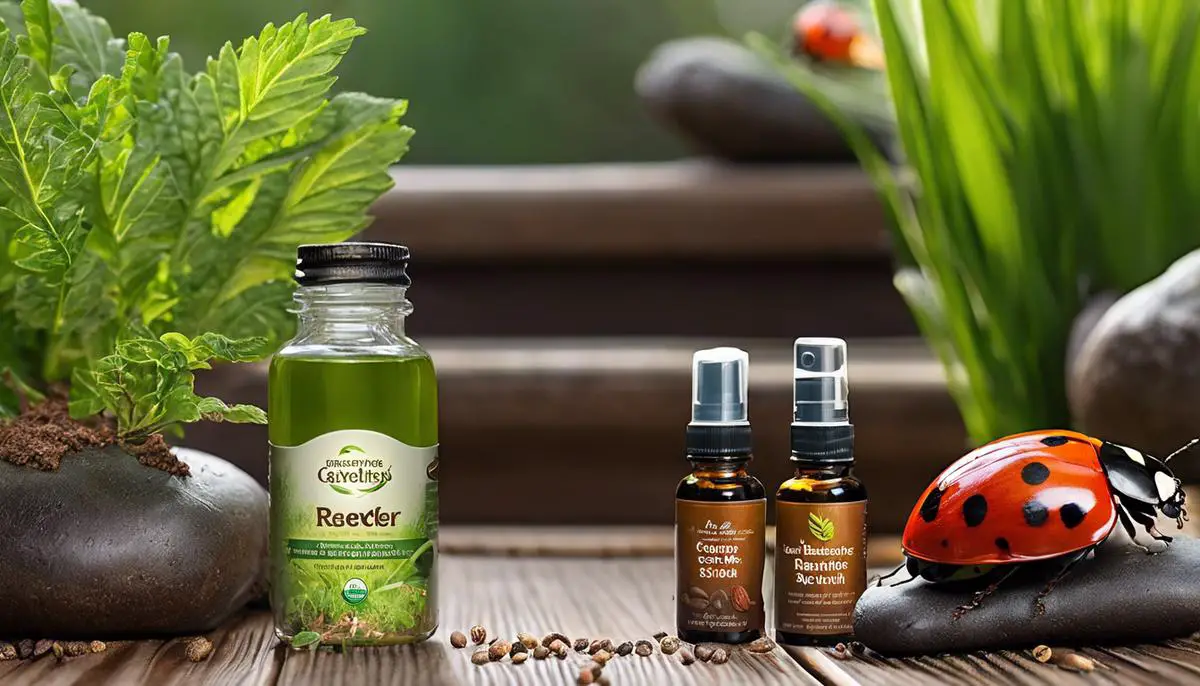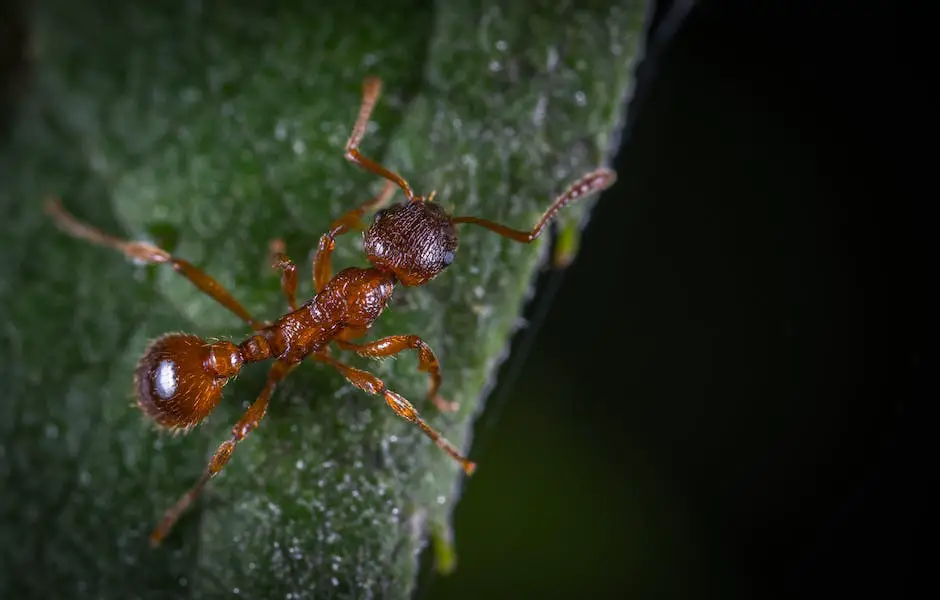The sanctuary of our homes is often threatened by an array of unwelcome intruders—pests. From the subtle gnawing of termites to the scurrying of cockroaches, these creatures can not only cause structural damage but also bring about health hazards.
But the key to a pest-free home doesn’t rest solely on reactive measures; rather it lies in understanding and preventing their very existence within our spaces. By delving into the fascinating yet critical world of pest behavior and ecology, we set the stage for a robust defense.
Through this exploration, we learn how to tailor our environments in ways that are inherently off-putting to pests, thereby safeguarding our homes with informed vigilance.
Understanding Pests and Their Habits
Unwanted Guests: Understanding the Drive Behind Home Invasions by Pests
When the tranquility of our homes is disrupted by the scurrying of little feet along walls or the unsettling sight of creepy crawlies where they don’t belong, one can’t help but wonder – what motivates a pest to turn our sanctuary into its playground? The answers are often simpler than one might expect and knowing them is the first step toward reclaiming your space.
At the heart of a pest’s home invasion strategy is the basic survival mantra: seek shelter, find food, and multiply. It might be irksome to share a living space with these unwelcome guests, but understanding their instincts can be the key to stopping them in their tracks.
Shelter:
Pests like rodents, ants, and spiders are on a constant hunt for the perfect residence, and unfortunately, human dwellings provide the ideal conditions. The nooks and crannies of our homes offer protection from predators and extreme weather conditions. The environment inside is often so cozy that once pests find their way in, they feel right at home.
Food:
If there’s anything that’s more attractive to pests than a warm shelter, it’s a steady food supply. Crumbs left behind from a midnight snack, an overflowing trash can, or even the pet food you leave out can become an all-you-can-eat buffet for intruders like cockroaches, ants, and mice.
Water:
Just like any other living creature, pests need water to survive. Leaky pipes, damp basements, and even the water in your pet’s bowl can be as inviting to them as a lake is to a camper.
Breeding Grounds:
Last of all, homes offer unparalleled opportunities for pests to breed and multiply undisturbed. A quiet attic or a wall void might just be the perfect maternity ward for a family of rodents or the secluded corner for a spider to lay her eggs.
Awareness of these motivating factors is crucial for homeowners wishing to keep their living spaces pest-free. Regular home maintenance and cleanliness can go a long way toward making your home less inviting to these common intruders. After all, pests aren’t analyzing complex situations; they’re driven by instinct and basic needs. Cut off their access to shelter, food, water, and breeding grounds, and you’ll significantly diminish the allure of your home to these persistent critters.
It might be a never-ending battle between humankind and nature’s smaller, more numerous citizens, but with a strategic approach, any homeowner can make their territory less appealing to pests. Keep boundaries strong, pantries sealed, and be vigilant of the cozy corners and damps spots that might just look like paradise to a wandering critter looking for a place to call home.

Cultural Practices for Prevention
The Everyday Dance: Subtle Moves to Keep Pests at Bay
In the grand scheme of warding off unwanted creepy-crawly guests, it’s the little things, the daily chores and practices, that can either roll out the welcome mat or slam the door shut on pests looking for a cozy corner in your home. The mantra here is prevention, and it’s an everyday affair.
First up, decluttering. It may not seem like a big deal, but pests adore the nooks and crannies that household clutter provides. Those stacks of magazines, cardboard boxes awaiting recycle day, or even that pile of clothes can be a haven for insects and rodents alike. Adopting a minimalist approach does not just soothe the human eye—it disheartens invaders seeking secret highways and hideouts in your living spaces.
Scrub-a-dub-dub isn’t just for the tub! Crumbs on the counter or a sticky spill left unattended are like neon signs for pests, especially the incessantly hungry ants. Wiping down surfaces after meals and sweeping floors to eliminate morsels can cut down the supply lines that pests rely on. Similarly, don’t overlook pet food bowls—keeping them clean and removing them once Fido or Fluffy has eaten is like removing the free buffet sign.
Laundry, often a dreaded chore, can also play a pivotal role. Regular washing of bedding, towels, and clothing, especially at high temperatures, can deter bed bugs, dust mites, and other fabric-fancying pests. In addition to this, managing moisture is crucial. Check for leaking pipes and faucets—dampness is the siren song for many pests, drawing them in and providing the perfect breeding conditions.
When it comes to trash, it’s essential to manage it smartly. Regularly emptying bins, securing garbage bags, and using cans with sealing lids frustrate pests who view trash as treasure. Composting is great, but it needs to be done right. An outdoor bin far from the house with a secure lid and proper layering of green and brown materials reduces the chance of your compost pile becoming a pest party hotspot.
Landscaping is not just about curbside appeal, either. Keeping trees and shrubs trimmed back from the house and ensuring mulch isn’t piled against the walls make it more challenging for pests to make the transition from the great outdoors to your living room.
Last but not least, the entrance policy to the house must be strict. Window screens should be intact and fit snugly, doors should have no gaps, and utility entry points must be sealed. Keeping these access points fortified with the right materials will send a clear message: No Admittance.
Become a maestro of these everyday habits, and the symphony of peace from pests in your home will be sweet music to your ears. The interplay between daily activities and pest prevention sends a clear signal that deters invaders, stitch by stitch weaving the tapestry of a more resilient home.
Remember, the chore done today keeps the pests away.

Physical Barriers and Repellents
As the quest to protect our homes from unwanted guests continues, physical barriers play a crucial role in fortifying our living spaces against pest incursions. Prevention is always better than cure; hence, identifying and implementing the right physical methods can make a significant difference in keeping our domiciles pest-free.
Firstly, screens are a homeowner’s first line of defense. Fine mesh screens on windows and doors prevent flying insects from buzzing in, while still allowing fresh air to circulate. It’s essential to inspect these barriers regularly for tears or gaps and repair them promptly.
Next up, door sweeps and weather stripping. These underrated heroes can seal the gap beneath doors and windows, deterring crawling critters from squeezing through. Replacing worn-out strips can dramatically reduce the likelihood of pests gaining entry.
Another effective strategy is applying caulk to seal cracks and crevices. Whether it’s in the foundation, around pipes, or in walls, sealing these minute openings with a good quality caulk cuts off many access routes pests use to infiltrate homes.
Don’t overlook the garage, often a neglected haven for pests. Installing a tight-fitting garage door seal and keeping the area clutter-free minimizes hiding spots and entry points.
Chimneys and vents often provide an unnoticed welcome mat for pests. Covering these with the appropriate hardware cloth or vent covers can block an aerial or creeping invasion without obstructing airflow.
Inside, physical traps can manage pests already present without employing chemicals. From simple flypaper for flying insects to spring-loaded traps for rodents, there’s a variety to choose from. It’s essential to check and clean these traps regularly to ensure they remain effective.
In the yard, keeping a tidy perimeter can deter pests. Use rocks or gravel near the foundations instead of mulch, which can be home to many insects. Additionally, installing a fence or burying hardware cloth a few inches underground can discourage burrowing animals.
An interesting physical method for garden pests is the use of companion planting. Certain plants can repel specific pests when planted in proximity to more vulnerable varieties. Researching which plants are natural deterrents can add an organic line of defense to the yard.
Lastl, for those with a real dedication to fortifying their homes, consider raised foundations or physical barriers buried around the perimeter of the house, designed to block subterranean pests. This method can be especially useful in areas prone to termite invasions.
Remember, when it comes to pest prevention, consistency is key. Regularly inspecting and maintaining physical barriers ensures they remain impenetrable. Armed with these methods, a fortress against pests is not just hopeful thinking – it’s achievable reality.

Chemical-Free Solutions
When pests infringe upon our sanctuaries, we’re often inclined to reach for quick chemical fixes, but let’s tread into the realm of non-toxic alternatives that are not only gentle on the environment but effective at keeping those unwelcome visitors at bay.
Let’s talk about essential oils. Their pleasant aromas for us can be a deterrent for pests. For example, peppermint oil is not just for freshening breath—it sends a clear message to ants, spiders, and even rodents to back off. Cotton balls dabbed in these oils placed strategically around the home create a barrier that smells great to us but is off-putting to pests.
Light the way to pest freedom with diatomaceous earth, a powder made from the fossilized remains of tiny aquatic organisms. This natural wonder causes havoc to the exoskeletons of various insects, dehydrating them without posing harm to humans or pets when used as directed. Apply it in thin layers around areas where insects are prone to enter.
The aroma of coffee grounds has potential as more than an eye-opener on sluggish mornings—it’s believed some insects find it repulsive. Scatter grounds in areas where pests are seen often as a dual-purpose tactic: enjoying your cup of joe while warding off unwanted critters.
Bring nature’s guardians to your defense by inviting beneficial insects to your garden. Ladybugs feast on aphids, praying mantises tackle a variety of pests, and bees pollinate your plants while helping maintain the ecological balance. Install a bug hotel or cultivate plants that attract these helpful critters.
Did you know the humble cucumber peel is an adversary to ants? Their aversion to the bitterness can be used to your advantage. Place peels where ants frequent and observe the retreat.
Neem oil, extracted from the seeds of the neem tree, has a formidable reputation in the garden as a pest deterrent without wreaking havoc on beneficial bugs. A neem oil spray can discourage pests from munching on plants and halt the progression of certain plant diseases too.
Last but not least, why not turn the tables and make pests unwelcome by cultivating a peaceful coexistence? Gardeners might consider using diverse planting strategies that support a healthy ecosystem where natural predators balance out pest populations, diminishing the need for intervention.
The ways in which we can arm ourselves against pests without resorting to toxic methods are numerous. Non-toxic pest control allows us to maintain our hobbies and homes in harmony with nature, utilizing an arsenal of environmentally friendly weapons that are often just as effective as their chemical counterparts, if not more so. Whether through the use of natural repellents, the aid of beneficial creatures, or harnessing the power of organic deterrents, we can enjoy a pest-free environment conscience-clear and nature-approved.

Monitoring and Professional Partnerships
At some point in every homeowner’s life, the question of when to call in the professionals for pest control inevitably creeps in. There’s pride in managing a problem single-handedly, but it becomes evident that certain pest problems are beyond the scope of do-it-yourself methods. Here’s a simplified guide to help determine the right time for professional intervention and the benefits of doing so.
Signs that Professional Pest Control is Needed
When uninvited guests become too persistent and you’ve exhausted all DIY options, consider these red flags:
- Recurring Infestations: Continual sightings of pests, despite your best efforts, suggest that there might be a larger problem at hand.
- Poisonous Pests: The risk of handling venomous spiders or stinging insects isn’t worth the hazard. These cases require expert handling for the safety of everyone involved.
- Large Colonies: Discovering extensive nests or colonies, such as termite mounds or large hornet nests, is a certain sign that professional services are necessary.
- Allergic Reactions: If anyone in the household has severe allergic reactions to pest bites or stings, it’s important to prioritize health and get professional help immediately.
Professional Services: Timing and Approach
The timing of professional intervention can make all the difference. Here’s how to incorporate these services effectively:
- Early Detection: Engage pest control services at the first sign of a problem. Postponing can lead to larger issues that are more complex and costly to resolve.
- Preventative Measures: Some regions have seasonal pest trends. Scheduling preventive treatments before peak season can save a lot of hassle.
- Post-renovation: After any major home renovation, consider a professional pest control evaluation to ensure that any new openings or vulnerabilities are addressed.
Benefits of Professional Pest Control
When debating the DIY approach versus hiring a professional, consider these advantages professionals bring to the table:
- Expertise: Professionals have the training and knowledge to identify, treat, and prevent specific pests effectively.
- Advanced Tools and Techniques: They bring access to more sophisticated tools and pest control methods that are not readily available to the public.
- Safety: Handling chemicals and dealing with potentially dangerous pests pose health risks. Professionals are equipped to tackle these dangers safely.
- Long-Term Solutions: Rather than a temporary fix, professionals are able to offer strategic plans that prevent future invasions.
Regular Maintenance Contracts
For peace of mind, regular maintenance contracts with pest control services offer routine inspections and treatments. These contracts can be particularly beneficial for:
- Properties in High-Risk Areas: If the locale is prone to specific pest issues, regular oversight can be a game changer.
- Food Service Establishments: Regular pest control is not just advisable but often required by law for businesses handling food.
- Homes with Vulnerable Occupants: Homes with young children, elderly, or immunocompromised individuals could benefit from the additional assurance provided by ongoing professional pest management.
While embracing the satisfying journey of safeguarding a home personally has its charms, understanding when to call in the pros is an essential part of responsible homeownership. Balancing DIY enthusiasm with the expertise of professional services leads to a fortress of a home where pests are nothing but a footnote in a well-managed domestic narrative.

Maintaining a home that is free from pests is an ongoing and proactive journey. As we assimilate the knowledge of pest habits and biology, and integrate cultural practices, physical barriers, and chemical-free solutions into our daily lives, we stand a much better chance at deterring these unwelcome guests. Vigilance in monitoring and the willingness to partner with professionals when necessary complete our arsenal in the fight against pest invasion. Our homes are our havens, and with well-informed strategies in place, we can ensure they remain that way, impervious to the silent encroachments of pests.

